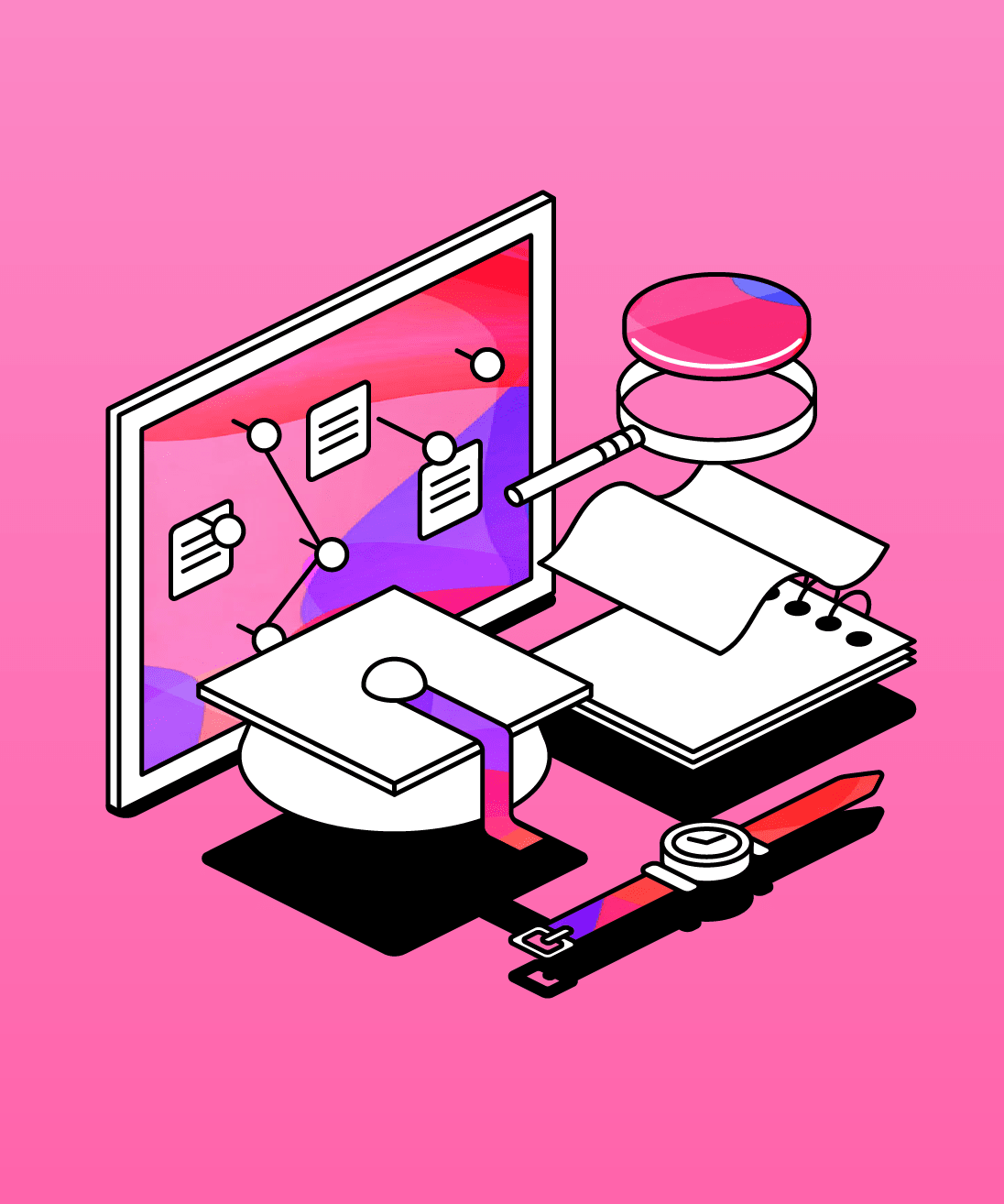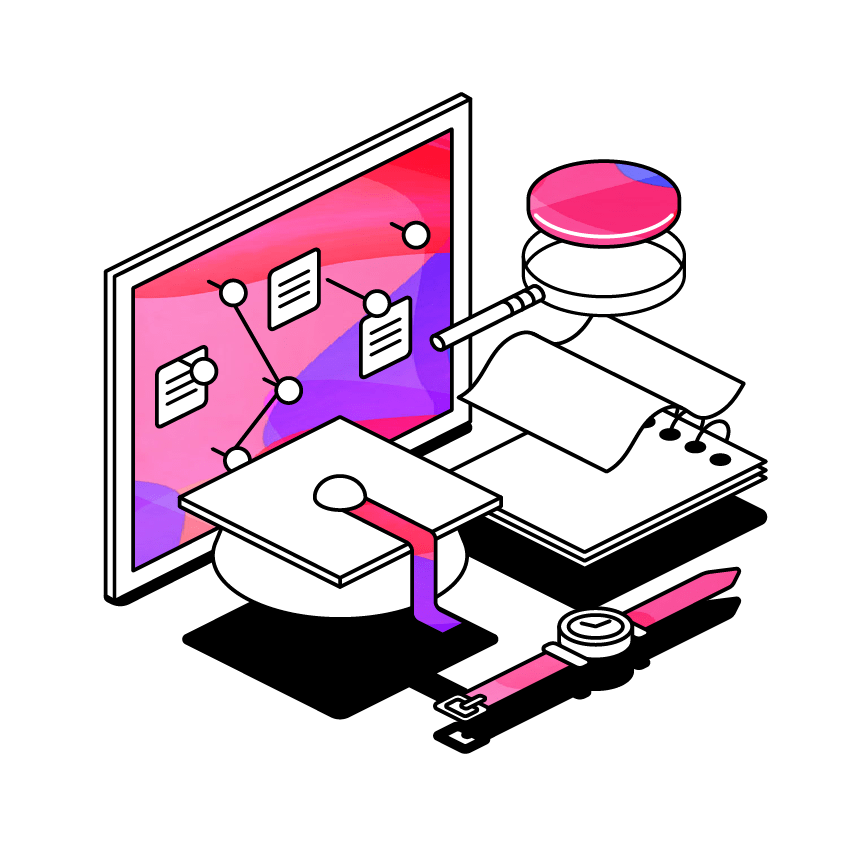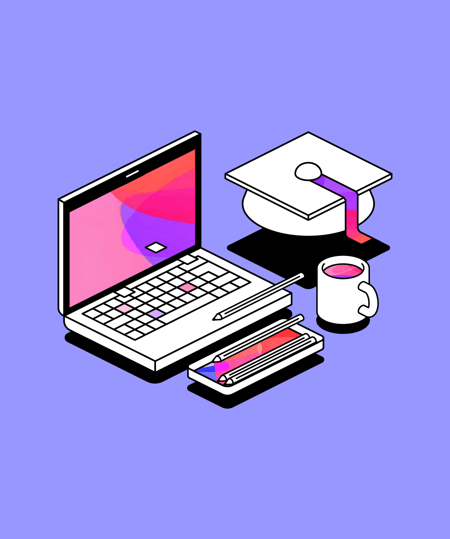How note taking improves learning
Learning is all about connections. In this post, we'll show you how note taking helps forge these connections and improve learner independence.
 4 min read
4 min read
 Published: 2 Jul 2021
Published: 2 Jul 2021
 Luke Garbutt
Luke Garbutt


What role does note taking have in the learning process? And how can it help learners unlock their full potential?
Learning is all about connections. Connections between new and learned information, connections between learner and environment, connections between learners themselves; each complement each other to make effective learning possible.
This article will help you visualise these connections. But it will also help you understand how note taking empowers learners to make vital connections of their own.
But first, we need to talk about 2020...
A shock to the (learning) system
The relationship between student and institution changed dramatically in 2020. The physical learning space vanished, leaving students and institutions entirely dependent on digital technology to keep education moving.
True, online learning has been around for some time, but always as an alternative to traditional teaching.
Suddenly, the classroom was no more. But because this change was sudden and forced, the careful work of accommodating a 100% virtual learning environment was incomplete.
This challenged learning connections in an unprecedented way, including the relationships students, teachers and the content itself all have with each other.
But by testing these core relationships, the pandemic helped shine a light on the state of modern learning.
Let’s look at those relationships.
Core learning interactions and how they function
We’ve used Lucidchart to sketch out the main classroom learning relationships according to a 2016 model (which you can find here).
Deep and meaningful learning happens when these interactions are strong and healthy.
What this means for learning
The three main participants in the learning process are the student, the content and the teacher, which all interact with each other and themselves.
As Anderson argues, deep learning is much more likely if these interactions are all highly functioning, but if one is prioritised, learning isn’t necessarily compromised.
This is an important point to consider, so we’ll explain it in a moment. But first, here’s a breakdown of each core interaction.
Student-Teacher
The instructional mode of learning. The teacher guides the student through the course, providing support and structuring the lessons.
Student-Student
Group work, seminars and collaborative projects all involve student-student learning interactions, where each learner benefits from the experience and understanding of others.
Teacher-Teacher
Educators collaborate to develop curricula, course design and determine learning objectives, as well as train and advise each other on best practice.
Teacher-Content
Classroom learning will be as influenced by a teacher’s relationship with the content as the student’s, including selection of materials, interpretation and analysis.
Student-Content
How does a student relate to, understand and use course content? This interaction is a direct relationship between a learner and learning material
Content-Content
How the learning content sits in relation to other materials on a course (or in a wider context) defines the content-content relationship.
Of course, different class types will depend on different interactions.
But given that ‘lecturing constitutes more than 80% of college instructors’ teaching methods’, it’s clear that teacher-student interactions are usually the most important.
And it’s this connection that was most strained by remote learning.
Students feel adrift
The problem students faced when campus shutdowns began is that the campus was no longer fostering these interactions.
The result was that 85% of the student body reported a drop in grades in Fall 2020. That’s a huge number, and reflects the damage that the pandemic has wrought on learning.
Earlier surveys had found students dissatisfied with communication between themselves and faculty, suggesting real problems with student-teacher interactions. For students with disabilities, this picture looks particularly bad, with 75% reporting difficulties in communicating with instructors.
What does this show?
It shows the importance of the student-content relationship.
When communication issues are causing weakened relationships elsewhere, a student’s ability to independently engage with course content is the best route to deep learning.
And it’s governed by good study skills.
A mediator for all learning interactions
We started off this series by arguing that learning is about more than remembering. It’s also about creating connections between what’s being learned and what’s been learned already.
But these connections are harder to make when students aren’t empowered to make the most of the information they’re facing.
Too often, students feel dependent on their teachers. And for students with disabilities, this dependence is passed on to note takers.
In a learning environment where students are cut off from each other and their instructors, where the feeling of a learning community stops at the end of a Zoom call, something more is needed to scaffold those connections.
Note taking helps move learners from encountering information for the first time, through to encoding and retaining that information, and finally to applying that information in useful ways.
To allow learners to get more from note taking, it’s useful to understand how it should work.

How CORA builds connections between student and content
Based on extensive research, we're helping learners gain more value from their note taking with a process designed to play to its strengths as a learning activity. We call our process CORA.
CORA guides users through four steps.
1. Capture
Learners select information to record. Important points, definitions, examples, tasks… anything that might be useful later.
2. Organise
Connecting this material to broader themes or topics comes next. More broadly, this is about making your notes make sense.
3. Refine
Going over those notes, adding clarity, annotating them, quizzing yourself - these are all designed to shore up what’s been learned from the process. But this step is also about cutting out irrelevant information and preserving what matters.
4. Apply
How do you apply these notes? How can they be used elsewhere? The notes themselves become tools to use for deeper learning.
The antidote to information overload
Note taking is a filter. It helps students sift through a steady stream of information to preserve what’s really important from a class and create new connections.
But good note taking is challenging, and inaccessible to many students.
So we need to level the playing field.
Note taking 2.0
How can students take great notes and engage with course content more independently?
That’s where Glean comes in.
Glean is a note taking solution designed to let students make personal connections with college content and gain deeper learning of the material. Through CORA, Glean helps users capture, organise, refine and apply class content easily.
It creates a much more dynamic and natural way for students to interact with class content than traditional note taking. And it works both in-person and virtually.
Written by Luke Garbutt

Up next: 'The Note Taker's Dilemma'
We've identified a problem facing all note takers. Do you recognise it?
More from Supporting Students
View All
 5 min read
5 min read
Understanding and supporting students with barriers in higher education
Take a deeper look into students with barriers to learner. Here, we discuss who they are, what challenges they face and what institutions can do to support them.

 3 min read
3 min read
Understanding and supporting time poor students in higher education
Here, we take a deeper dive into who the time poor learners are, and their unique challenges. Explore strategies to support students juggling multiple roles and responsibilities, to create a more inclusive and flexible learning environment.

 3 min read
3 min read
Navigating the AI landscape in education: Helping or hindering student success
AI has transformed what it means to teach and to learn. It is crucial now for higher education leaders to determine how they deploy AI to help, rather than hinder, student success.





